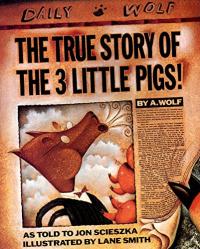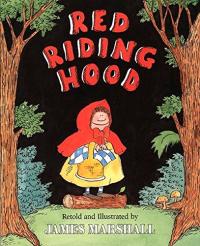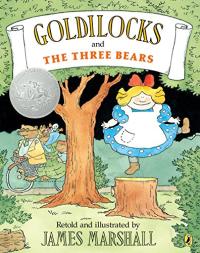Key Information
Focus
When To Use This Strategy
Appropriate Group Size
What is a story map?
A story map is a graphic organizer that helps students learn the elements of a narrative. Learning to identify a story’s characters, plot, setting, problem, and solution prompts students to read carefully to learn the important details. There are many different types of story maps. The most basic ones focus on the beginning, middle, and end of the story while more sophisticated organizers focus more on story elements like plot, character development, or theme.
Why use story maps?
- They improve students’ comprehension of narrative text.
- They provide students with a framework for identifying the elements of a story.
- They help students of varying ability capture and organize information and ideas efficiently.
- They help students develop a deeper understanding of how stories work that can be applied to other texts and content areas.
How to use story maps
- Define and discuss the components of a story (e.g., characters, setting, plot and theme or beginning, middle, end) using a familiar story as an example
- After a whole-class read-aloud of a story, complete a story map on chart paper with input from students
- If students will story maps individually, provide each student with a blank story map organizer and have them complete their own copies as you co-construct the larger version.
- Once students understand how to construct story maps, they can complete story maps as they read or, after reading, they can fill in any missing parts.
Watch a demonstration
The teacher completes a story map for “The Three Little Pigs” step-by-step, explaining each narrative element.
Watch a lesson (whole class, grade 1)
As part of a lesson on retelling, the teacher completes a story map for “Butterfly’s Life,” a narrative nonfiction text, with input from students.
Watch a lesson (whole class, grade 2)
Following a whole-class read-aloud of The Hen and the Apple Tree, the teacher completes a story map with input from students to help them identify the moral of the story (beginning at 12:07).
Collect resources
Simple story map templates
More complex story map templates (characters, setting, plot, conflict and resolution)
Differentiate instruction
For second language learners, students of varying reading skill, and younger learners
- Scaffold your instruction by providing prompts for each section on your map. For example, in the “Beginning” box of your map, use prompts such as: Who are the main characters? Where does the story take place? You can write in these prompts before printing or making copies of a story map intended for students to fill out independently.
- Differentiate by providing less complex story map templates — the beginning-middle-end format is the simplest — for those working to grasp the basics of stories and other, more complex maps, with students ready to engage in more complex work.
- Model this strategy using a book with very clear components to help students understand each component.
- Have the students complete story maps in pairs, being sure to partner a reader or writer who needs extra support with one who has more skill. Partners can also fill out a story map together after a Paired Reading activity.
Extend the learning
This chart shows how the story mapping strategy can be used in language arts, history, and science. See cross-disciplinary story mapping chart ›
Writing
Students can extend their understanding of story maps into their own writing. Students can use story maps to plan, summarize, and write their own main ideas, characters, setting, and plot for a story. Find more ideas for using graphic organizers to support writing ›
Language Arts
This story map example demonstrates how story maps are used with an Arthur story. Students identify the setting, characters, the problem, and the solution in the story.
Math
Story maps can be used to help students solve open-ended math problems or create their own math problems. This work helps students break down problems into smaller sections in order to understand what is being asked.
Social Studies
Using the format of the story map, students can create their own map by taking a walk around the playground or school. Encourage students to include positional words in their story map writing.
Learn more about strengthening reading comprehension in our self-paced module Reading 101: Comprehension.
See the research that supports this strategy
Adler, C. (2004). Seven Strategies to Teach Students Text Comprehension.
Armbruster, B. B., Lehr, F., & Osborn, J. (2001) Put reading first: The research building blocks for teaching children to read kindergarten through grade three. Washington, DC: The U.S. Department of Education.
Boulineau, T., Fore, C, Hagan-Burke, S. and Burke, M. (2004). Use of Story-Mapping to Increase the Story-Grammar Text Comprehension of Elementary Students with Learning Disabilities. Learning Disability Quarterly, Vol. 27, No. 2 (Spring, 2004), pp. 105-121
Nell K. Duke, P. David Pearson, Stephanie L. Strachan, and Alison K. Billman (2011) Essential Elements of Fostering and Teaching Reading Comprehension . From What Research Has to Say About Reading Instruction (4th ed.), International Reading Association.
Nell K. Duke, Alessandra E. Ward, and P. David Pearson (2021). The Science of Reading Comprehension Instruction , The Reading Teacher, Vol 74, No. 6 (May-June 2021).
Dunst, C, Simkus, A, Hamby, D. (2012). Children’s Story Retelling as a Literacy and Language Enhancement Strategy. CELLreviews 5(4). Asheville, NC: Orelena Hawks Puckett Institute, Center for Early Literacy Learning.
Santa, C., Havens, L., & Valdes, B. (2004). Project CRISS: Creating independence through student owned strategies 3rd Edition. Dubuque, IA: Kendall Hunt Publishing Company.
Timothy Shanahan et al., Improving Reading Comprehension in Kindergarten Through 3rd Grade (2010). U.S. Department of Education, Institute of Education Sciences.
Trabasso, T., & Bouchard, E. (2002) Teaching readers how to comprehend text strategically. In C. Block and M. Pressley, (Eds.) Comprehension instruction: Research-based practices (pp. 176-200). NY: Guilford Press.
Children’s books to use with this strategy

The True Story of the Three Little Pigs

Red Riding Hood

